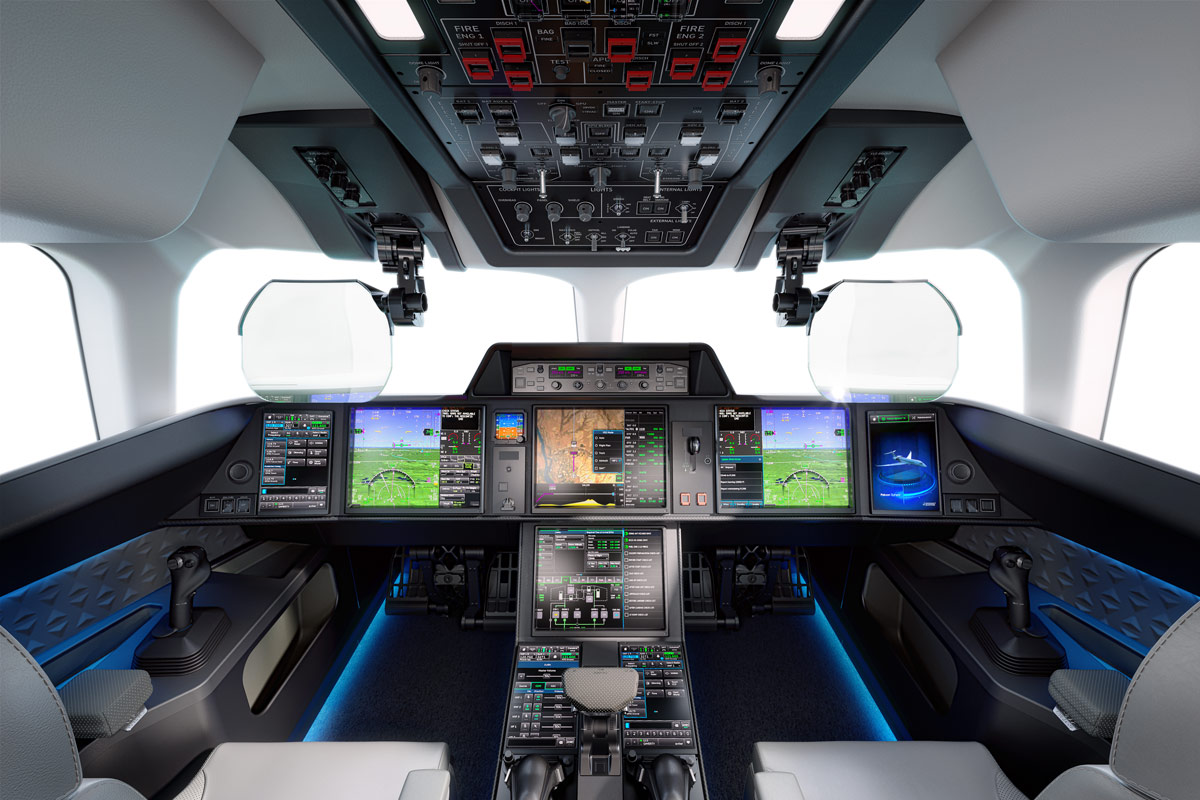The "Design and Architecture of Cognitive Air Systems" teaching and research chair, initiated in 2016 by Dassault Aviation, ISAE-SUPAERO and its Foundation, aims at rethinking the relationship between crews and systems used in aviation. After some first promising results, the two aviation actors have decided to renew their partnership for another three years.

WORK AIMING TO OPTIMIZE HUMAN-MACHINE INTERACTION
This chair, whose principal areas of research are neuro-ergonomics, automated decision-making and systems engineering, aims to study different aspects of human-machine collaboration. The idea is to make civil and military aviation operations more robust, efficient and safer, while guaranteeing complete crew control. The systems considered are often operated in complex situations, so they feature advanced automated decision-making algorithms from the field of artificial intelligence (AI) to carry out their missions more independently, but always under human control.
At ISAE-SUPAERO, the Department of Aerospace Vehicles Design and Control (DCAS) has expertise in neuro-ergonomics and AI for systems control. The field of neuro-ergonomics analyses brain function and user behaviors at work through the lens of neuroscience. In practical terms, it involves evaluating the mental state of users in relation to their ability to complete the tasks assigned to them. AI for system control is the field that develops algorithms for automated decision-making. The decisions concern, for example, the set of tasks to be suggested to the operator or to be fully automated to alleviate the operator’s workload and improve their performance in the operating context.
“Dassault Aviation is particularly interested in issues surrounding Human-Machine interaction because military aviation is a very demanding field due to the variety and unpredictability of missions which require complex tactical management. The challenge lies in providing Humans with all the services they need to take responsibility for this management. This is why we are working with ISAE-SUPAERO in order to identify the phenomena that impact collaboration between crews and their machines”, says Jean-Louis Gueneau, Scientific Coordinator of the chair at Dassault Aviation.
FIRST CONCLUSIVE RESULTS
The work conducted by the research chair on Human-Machine interaction from 2016 to 2021 led to the development of different tools based on physiological measurements, as well as machine learning techniques and automated action planning. The teams particularly focused on developing active or passive assistance functions to help pilots and operators improve their performance.
To do so, work was initially centered on “Pilot Monitoring” to gain a better understanding of the crew’s activity. Experiments were conducted on simulators using behavioral and physiological measurement tools to determine metrics capable of evaluating the operator’s performance, and their level of engagement or stress.
Dassault Aviation are planning to integrate these functions into their civil and military aircraft within the next decade.
THE MACHINE, THE OPERATOR’S TEAMMATE
“This chair focuses primarily on the development of innovative technologies that contribute, on the one hand, to qualify the human-machine interaction to see whether the collaboration is efficient, and on the other, to automatically decide what should be maintained, proposed, or changed to foster the team’s performance”, explains Caroline Chanel, Chair Manager at ISAE-SUPAERO.
For this purpose, quantitative behavioral and physiological metrics will be combined with more qualitative metrics to evaluate the efficiency of Human-Machine cooperation. This efficiency assessment will then be used by AI algorithms to adapt and enhance the cooperation.
These innovative topics are of interest to industrial firms and researchers with a view to developing concrete applications in the long term.

